 |
||
|
||
| ||
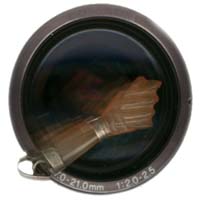 Business is said to be a war. Last year on all fronts of the digital photo field we could watch local battles without any great break-through. The major event on the mass mid-to-high end market was a release of the ICX406AQ CCD by Sony (GRGB filters, 4.1 Mpixel sensors, 2312 x 1720 CCD resolution, 1/1.8" type, 3.12 micron, 7.20 x 5.35 mm CCD). This CCD has the same size as the ICX252AQ. It allowed most of the camera makers to move from 3-Mpixel to 4-Mpixel cameras without changes in construction. However, Toshiba who was the first to announce a 4Mpixel camera changed in its Allegretto M81 both a lens for the Canon with a 2.8x focal length and a CCD maked by Sharp. 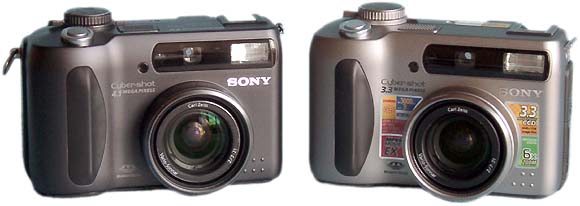 Sony set an example to all by releasing model 85 which was absolutely identical to the 75th one. Canon followed it and introduced the G2 which replaced the G1, and Casio entered the market with its QV-4000. The 4000th model differs much from the QV-3000 and QV-3500 in appearance, though the lens is the same.  The Vario Sonar lens from Zeiss and the similar Canon (f=7-21 mm) seem to be the most successful in the photo world. The device is able to work both with 3x and 4x Mpixel CCD. And considering that this lens is used by such companies as Sony, Canon, Toshiba, Casio and Epson it looks like the most popular lens for digital cameras. Its characteristics make it unnecessary for film cameras to create a CCD of the same sensitivity and with the same number of pixels for operation with classical lenses. Casio wasn't probably so sure in the lens and played safe by making the frame a bit smaller than that of Canon or Sony. Frame size of the 4Mpixel cameras.
Digital cameras in 2001 were developed at the expense of new lenses for 2x and 3x Mpixel cameras. There were several successful cameras with a 5x and 10x focal length. Now the general quality of digital cameras like that of film ones is determined by a lens. Last year it became quite well noticeable that image quality on edges was much worse than in the center. This inability of the optics to keep up with the CCD sensor brought in 2.6 Mpixel cameras with a 3 Mpixel CCDs such as Canon Pro90 IS and Sony DSC-F505V. The manufacturers had to use a black frame around a working surface to leave only that part of a frame which had acceptable image quality. But the optical technologies were developing quite rapidly last year, and the 5.24 Mpixel Sony ICX282 CCD sensor gave birth to the Sony DSC-F707 camera with the corresponding resolution and a 5x focal length. 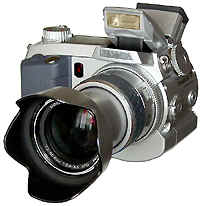 In general, a rush for pixels wasn't wide. Nikon left out the 4Mpixel bar and entered the 5Mpixel club with its Nikon Coolpix 5000 together with Sony DSC-F707 and Minolta DIMAGE 7. The latter model was very good, first because of a 7x focal length and, secondly, because of a lack of fatal bugs. But you have to pay twice more for frames larger by 10% (2560 x 1920) as compared with 2312 x 1720 frames of 4Mpixel cameras. A contrast transfer function of these cameras, with regard to a distance from the frame's center and a focal length, correspond to the best samples of film camera's lenses with an identical focal length factor. But I mean not 'grooves per mm' because here a resolution of digital cameras is very close to the maximum possible one, but 'grooves per frame' which allow us to adequately compare their characteristics with those of film camera's lenses. In the sphere of top models and reflex cameras there wasn't much progress done. On the contrary, there were some disappointing steps. 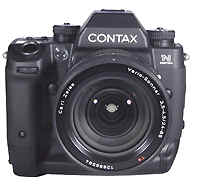 For example, Asahi Optical announced that its 6Mpixel camera based on the film model Pentax MZ-S and shown out widely won't be produced as it's not profitable today. Since the prototype is quite successful the problem is possibly in a cost of a 6 Mpixel CCD from Philips which coincides with a standard frame size. A similar 6Mpixel camera from Contax N Digital with a Philips' CCD exists only as a sample and the sales of the production samples are promised to start only next year. The market of professional cameras turned out to be more progmatic. The needed resolution is reached already and it is determined by two factors: 1) a human eye is able to distinguish two pixels being 0.1 mm apart at the distance of 25 cm, 2) a human eye sees a picture which is approximately equal in dimensions to the distance to it when the pupil stays immovable. Hence a length of a frame of 2500 pixels. If we consider real capabilities of polygraphy and not its steep demands the figure will be less by one third. The real capabilities mean reproduction of all frame's details on an A4 print. You can argue that there are larger prints but remember that you can embrace them only from a longer distance (see items 1 and 2). In the history of photography a really needed resolution always beat potential capabilities. Almost a century ago a 35mm film crowded out a medium-format 6cm one, and lenses with a variable focal length made its capabilities also unclaimed; the APS standard (Advanced Photo System) seems to be dead now as well under the pressure of digital cameras. Last year Canon and Nikon released cameras with a larger resolution than that of their predecessors. But the first one did it because it refused the CMOS, and the CCD of the Nikon D1X was a kind of the Fuji (FujiFilm FinePix S1 Pro, 3.07 Mpixel sensors allows for a frame of 3040 x 2016) – an interpolation of measurements implemented with a CCD which consists of 4028 x 1324 (5.33 Mpixel) physical sensors into a frame of 3008 x 1960 pixels. I don't know whose CCD matrix is used in this device but earlier rectangular sensors were used by Kodak both in expensive cameras and in value ones like the DC120. The current reflex cameras from Kodak, DCS760, have square sensors which are now 6.35 million, 3088 x 2056, on a surface of 27.7 x 18.5 mm. 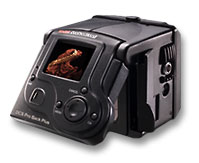 Kodak entered the advertising photography market by introducing its 16 Mpixel ITO CCD (Indium Tin Oxide sensor) 4080 x 4080 DCS Pro Back Plus which is an attachment for medium-format cameras priced at $21,995. On the value market this company didn't turn to 4Mpixel models. Fuji is likely to be disappointed in reflex cameras and the rumor has it that it stopped production of S1 Pro and focused on good optical systems for its Super CCD 3Mpixel matrixes. As a result, it launched a quite good SUPER-EBC FUJINON (f=7.8-46.8 mm, 1:2.8-3.1). 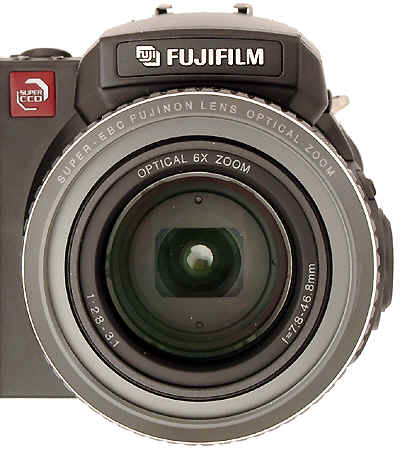 CMOS matrices couldn't catch up with CCD ones. The Canon EOS D-30 is the only 3Mpixel sensor based on the CMOS technology. The company says it works on this type of matrices but the next, 4Mpixel camera D1 has a CCD matrix, probably from Matsushita Electric (Panasonic). Some geometrical characteristics of some famous matrices (unofficial data)
Digital cameras do not want anymore to feel like junior brothers of film ones; it is proved by a rapid development of the new dedicated optics for digital cameras and creation of cameras with an electronic viewfinder, like that in a video camera, which allows seeing a pure image formed by a lens when the sun is shining brightly instead of an optical viewfinder with a jumping or semitransparent mirror. The exception which proves this trend is the Olympus E10 and E20 (5.24 Mpixel, 2560 x 1920 pixels) 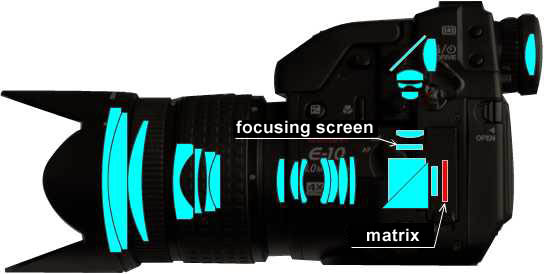 A beautiful idea of Silicon Film to create a digital film based on the CMOS technology failed. Last year the company changed its name from Imagek to Silicon Film but the problem was not only the name, and it was announced a bankruptcy procedure against this company. 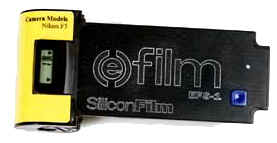 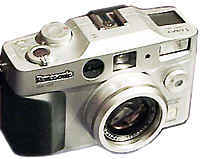 As for new names I can only mark out an alliance of Leica and Matsushita. The characteristics of their 4 Mpixel camera LUMIX DMC-LC5 with the Leica DC VARIO-SUMMICRON lens makes me think the alliance will be successful. But so far some information can be taken only at their Japanese site in hieroglyphs. This year, I think, the memory will further go
down in price, and it will be much argued what type is better. The
most popular will be cards of 128 MBytes. A user will pay attention
to a read speed and a record one from memory. The market of various
attachments will be rapidly developing as well. The lower niche
up to $300 will have 2Mpixel cameras and the mid one will be glutted
with 4Mpixel ones. The price of the latter ones will greatly depend
on an optical system.
Write a comment below. No registration needed!
|
Platform · Video · Multimedia · Mobile · Other || About us & Privacy policy · Twitter · Facebook Copyright © Byrds Research & Publishing, Ltd., 1997–2011. All rights reserved. |